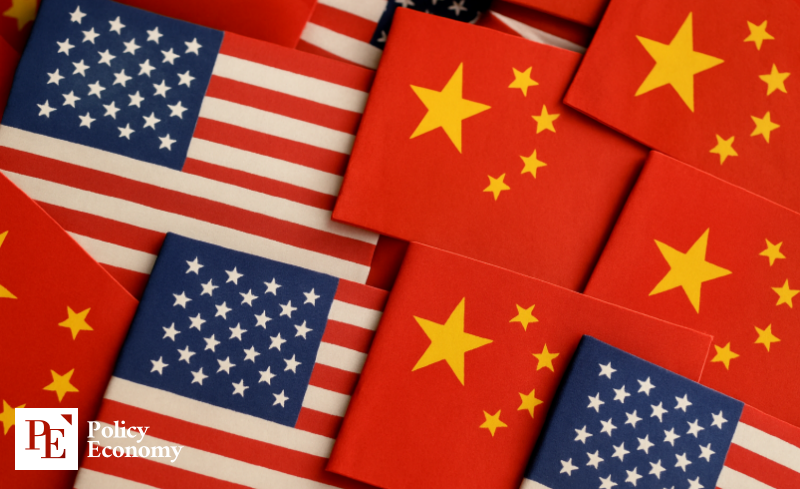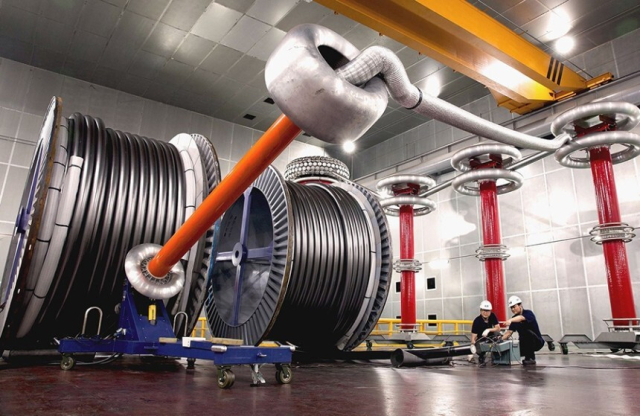U.S. FCC Effectively Expels Chinese Subsea Cables, Korean Cable Industry Anticipates Windfall
Input
Modified
Washington moves to curtail Chinese subsea cables, Data demand elevates subsea cables to ‘strategic assets,’ Expulsion of Chinese products accelerates supply chain realignment.

The U.S. government has effectively barred Chinese subsea data cables on national security grounds, citing concerns that Chinese technology could exploit vulnerabilities in global networks. Korea’s cable industry expects that Washington’s hardening stance toward Beijing may soon extend to power grid cables, potentially delivering indirect benefits.
U.S. Administration: “Protecting Subsea Cables from Adversaries”
On August 25, Nikkei Asia reported that Washington’s sweeping overhaul of subsea cable regulations—the first in two decades—reflects President Donald Trump’s determination to bolster communications security and safeguard the strategic significance of subsea infrastructure. Earlier, on August 7 (local time), the Federal Communications Commission (FCC) announced: “We have adopted rules that fundamentally block participation of strategic competitors, including China, in subsea cable projects.” The FCC further stated: “For reasons of cyber and physical security, we will encourage the use of U.S.-flagged vessels or trusted foreign technologies when repairing or maintaining subsea cables.”
The new regulations strip companies based in adversarial states such as China, Russia, and Iran of eligibility to participate in projects related to U.S.-owned subsea cables. Washington aims to secure the entire subsea cable supply chain, including raw materials and transmission equipment. In contrast, approval procedures will be streamlined for allied and partner firms from Korea, Europe, and beyond. The intention is to incentivize both public and private investment in this capital-intensive sector while opening new opportunities for allied firms in a market where Chinese players are excluded.
Washington has long recognized the strategic importance of subsea cable security. Today, subsea cables transmit over 95% of international data traffic and facilitate roughly $10 trillion in daily financial transactions. Around 90% of the world’s subsea cables are manufactured by Korea’s LS Cable & System, U.S.-based SubCom, and France’s Alcatel Submarine Networks. Yet, China’s HMN Technologies has recently gained a foothold in Africa and the Pacific islands, expanding its market share.
Suspicion of Chinese Attacks on Subsea Infrastructure
According to the House Committee on Homeland Security (CHS), the new rules also follow revelations that Microsoft had contracted engineers based in China to maintain Pentagon computer systems, with only limited oversight from U.S. officials. Nonprofit media outlet ProPublica earlier warned that such arrangements risked exposing sensitive national security data to Chinese cyber threats.
Recent incidents have heightened global alarm over subsea network security. Reuters reported that in January, the Chinese-owned vessel Shunxin 39 damaged four cable cores near Yehliu, New Taipei City, Taiwan. The cargo ship, registered in Cameroon and Tanzania, was crewed entirely by Chinese nationals.
Taiwanese authorities regard Beijing as the prime suspect. Records show the vessel originally sailed under the Chinese flag before its registration was altered last year. Moreover, the Shunxin 39 operated under dual registration numbers and carried two sets of Automatic Identification System (AIS) equipment, which was switched off just before the incident.
This was not the only case under suspicion. The European Union has been investigating allegations that in November 2023, the Chinese-flagged Yi Peng 3 damaged two intersecting subsea cables in the Baltic Sea linking Lithuania, Sweden, Germany, and Finland. In October 2023, the Hong Kong-registered Newnew Polar Bear damaged a gas pipeline between Estonia and Finland with its anchor. Roughly a year later, a Finnish investigation concluded that a Chinese container ship bore responsibility for the incident, which Beijing ultimately admitted.

K-Cables: Risk of Cut-Rate Chinese Competition Fades
Within Korea’s cable industry, the latest U.S. measures are seen as a potential boon. Though the rules presently target telecommunications subsea cables, industry voices expect Washington to extend similar restrictions to HVDC subsea cables—core infrastructure for power transmission—on grounds of military, economic, and energy security.
HVDC subsea cables are critical to transporting electricity from offshore wind farms to onshore grids. Compared with telecom cables, they require more advanced technology and complex installation, and command several times higher prices as premium products. The global HVDC subsea and underground cable market is dominated by four companies—Italy’s Prysmian, France’s Nexans, Denmark’s NKT, and Korea’s LS Cable & System—collectively holding over 85% market share. While Japanese and Chinese manufacturers possess limited capacity, their production remains largely confined to domestic markets.
An industry source remarked: “Korean companies are not directly competing with Chinese suppliers in the U.S. market at present, so immediate gains may be limited. But this measure effectively blocks cheap Chinese imports from entering the U.S., which could yield long-term advantages.” Washington has pledged to inject more than $1 trillion into power grid investment by 2030, meaning one formidable competitor may be sidelined.
In Korea, LS Cable & System and Taihan Cable & Solution compete in the HVDC subsea cable space. LS subsidiary LS Greenlink broke ground in April on a subsea cable manufacturing plant in Chesapeake, Virginia, with an investment of about $681 million. The facility is slated for completion in Q3 2027 and mass production by Q1 2028. Taihan, which lacks U.S. manufacturing, is also expected to pursue local production capacity. The industry anticipates that establishing U.S.-based plants will not only mitigate policy risks but also enable a dual-track strategy of extending supply chains into Europe.





















